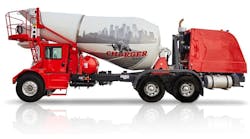The last week of April marked a month since the collapse of Baltimore’s Francis Scott Key Bridge into the Patapsco River when container ship Dali took down one of its key support columns. The week also marked the delivery of a HSWC500-1000 hydraulic salvage grab to aid in the ongoing cleanup effort.
The grabber is comprised of two hydraulic claws and is nicknamed “Gus.” It weighs 165 tons, and when hooked onto the Chesapeake 1000 crane being used in the cleanup, the unit has a combined lift capacity of 1,000 tons. Manufactured by The Grab Specialist, the grab was delivered to Sparrows Point from its previous home in Galveston, Texas.
The hydraulic grab was built in 2015 and used by the global salvage firm Ardent to clear wreckage from the Troll Solution, a jack-up offshore oil rig that collapsed in 2015. In 2019, it was used after the capsizing of the MV Golden Ray—a 660-foot roll-on/roll-off cargo ship that carried motor vehicles—in St. Simons Sound in Georgia.
According to the manufacturer’s website, the grab is specially designed for handling shipwreck material and can be deployed with two or four tines depending on the size of the materials being handled. In its configuration of four tines (two claws) at Sparrow’s Point, it stands at 24 feet tall when open, 28 feet when closed, and has an opening width of 22 to 29 feet.
The Key Bridge Response Unified Command—consisting of the U.S. Coast Guard, U.S. Army Corps of Engineers, Maryland Department of Transportation, Maryland Transportation Authority, Witt O’Brien’s representing Synergy Marine, and the Maryland State Police—says it chose the grab based on its size and grab capacity.
“The grab was chosen because it is the largest in the U.S.,” says Erin Cox, U.S. Coast Guard Marine Science Technician 3rd Class (MST3) Petty Officer, stationed on the Key Bridge site. “It matches perfectly with the Chesapeake 1000 [crane].”
The grab has lifted sections of the bridge weighing as much as 500 tons as salvage operations start to pivot toward clearing debris from the harbor’s 50-foot main channel.
Army Corps of Engineers officials estimate another 50,000 tons of debris need to be moved.
“The grab is a precision grab,” says Cox. “Based on survey data that we have, the boom goes to the exact point that we want it to, then the grab is deployed.






